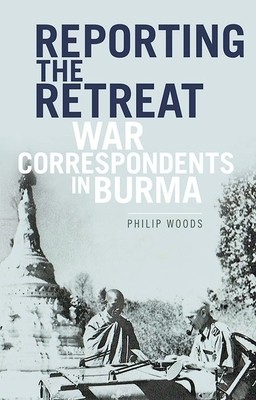
- We will send in 10–14 business days.
- Author: Philip Woods
- Publisher: Oxford University Press, USA
- ISBN-10: 0190657774
- ISBN-13: 9780190657772
- Format: 14.5 x 21.8 x 2.3 cm, kieti viršeliai
- Language: English
- SAVE -10% with code: EXTRA
Reviews
Description
The British defeat in Burma at the hands of the Japanese in 1942 precipitated the longest retreat in British military history and the onset of its most drawn-out campaign of World War II. It also marked the beginning of the end of British rule, not only in Burma but also in south and south-east Asia. There have been many studies of military and civilian experiences during the retreat but this is the first book to look at the way the campaign was represented in the Western media: newspapers, pictorial magazines, and newsreels. There were some twenty-six accredited war correspondents covering the campaign, and almost half of them wrote books about their experiences, mostly within a year or two of the defeat. Their accounts were censored by government officials as being misinformed and sensationalist. More recent historians, on the other hand, have criticised them for being too patriotic and optimistic in their coverage and thus giving the public an unrealistic view of how the war
was progressing. Philip Woods returns to the original sources to assess the validity of these criticisms. His is the first re-evaluation of the war correspondents' role in Burma and as such will be of great value to historians of conflict and students of journalism and media.
EXTRA 10 % discount with code: EXTRA
The promotion ends in 23d.06:41:33
The discount code is valid when purchasing from 10 €. Discounts do not stack.
- Author: Philip Woods
- Publisher: Oxford University Press, USA
- ISBN-10: 0190657774
- ISBN-13: 9780190657772
- Format: 14.5 x 21.8 x 2.3 cm, kieti viršeliai
- Language: English English
The British defeat in Burma at the hands of the Japanese in 1942 precipitated the longest retreat in British military history and the onset of its most drawn-out campaign of World War II. It also marked the beginning of the end of British rule, not only in Burma but also in south and south-east Asia. There have been many studies of military and civilian experiences during the retreat but this is the first book to look at the way the campaign was represented in the Western media: newspapers, pictorial magazines, and newsreels. There were some twenty-six accredited war correspondents covering the campaign, and almost half of them wrote books about their experiences, mostly within a year or two of the defeat. Their accounts were censored by government officials as being misinformed and sensationalist. More recent historians, on the other hand, have criticised them for being too patriotic and optimistic in their coverage and thus giving the public an unrealistic view of how the war
was progressing. Philip Woods returns to the original sources to assess the validity of these criticisms. His is the first re-evaluation of the war correspondents' role in Burma and as such will be of great value to historians of conflict and students of journalism and media.


Reviews